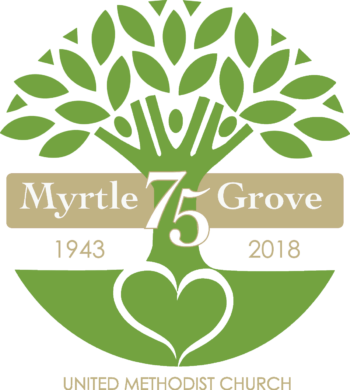
Airman Mohammed Hathaim, 19 Student, Naval Aviation Schools Command

Ensign Joshua Kaleb Watson, 23 Student, Naval Aviation School Command

Airman Apprentice Cameron Scott Walters, 21 Student, Naval Aviation Schools Command

Michael Rogers USAF 3 Years E4 Died: 2018
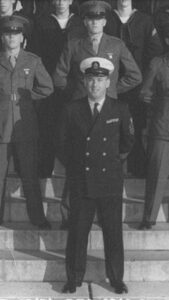
William Hogan Navy E8 26 Years Died: 2016

Ben Casalina US Navy PO1 10 Years Died: 2016
Not Pictured:
Hal Leitman
Coast Guard
SAHM
1 and half years
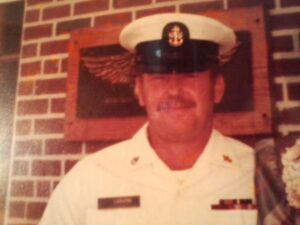
Ken Laguens Navy CTRC 20 Years Died: 2013

David Carrick (seated on right) Navy 2nd Class 1965-1970 Died: 2011

Bob Wright Navy WWII 4 years Radioman 1st Class Death: 2011
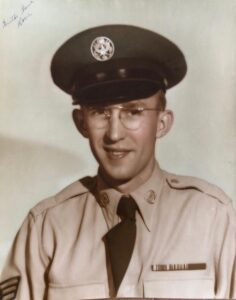
John R. Boston Navy 4 yrs. Air Force 19 yrs MSGT Died: 2008
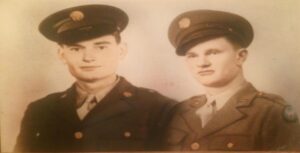
William Garrett (on right) Army Air Corp WWII 1942-1945 Air Force Sgt Death: 2006

George Herndon Navy PO1 23 years Died: 2003

Roy Tritt Navy WWII USS Ajax Fireman 1st Class Died: 2002
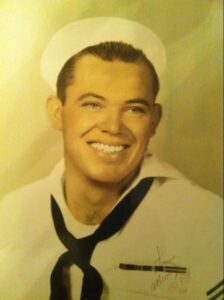
Carlton Wallace Navy 24 years Airplane Mechanic Died: 1997

Jay Smith US Army PFC WWII Died: 2014

Max Andrew Harris US Navy E6 died: 2019
FLAG DAY
Flag Day is celebrated on June 14th, because that was the day that Congress officially recognized it as the flag of the United States in 1777. Apparently, it wasn’t such a big deal at the time since flag discussion was the fifth order of business that day. June 14th is also the date in 1775 that congress formally authorized the enlistment of soldiers into what was then called the Continental Army.
Fun Facts about the American Flag:
- There are 50 stars and 13 stripes on the American flag.
- History states that red, white and blue were chosen as the colors to represent valor (red), liberty and purity (white), and justice and loyalty (blue).
- There have been 27 official versions of the American flag, each with a different amount of stars (depending on the number of states in the Union at the time).
- When the American Revolution broke out in 1775, the colonists weren’t fighting united under a single flag. Instead, most regiments participating in the war for independence against the British fought under their own flags. In June of 1775, the Second Continental Congress met in Philadelphia to create the Continental Army—a unified colonial fighting force—with the hopes of more organized battle against its colonial oppressors. This led to the creation of what was, essentially, the first “American” flag, the Continental Colors.
For some, this flag, which was comprised of 13 red and white alternating stripes and a Union Jack in the corner, was too similar to that of the British. George Washington soon realized that flying a flag that was even remotely close to the British flag was not a great confidence-builder for the revolutionary effort, so he turned his efforts towards creating a new symbol of freedom for the soon-to-be fledgling nation.
On June 14, 1777, the Second Continental Congress took a break from writing the Articles of Confederation and passed a resolution stating that “the flag of the United States be 13 stripes, alternate red and white,” and that “the union be 13 stars, white in a blue field, representing a new constellation.”
In 1916, President Woodrow Wilson marked the anniversary of that decree by officially establishing June 14 as Flag Day. Bernard Cigrand, a small-town Wisconsin teacher, originated the idea for an annual flag day, to be celebrated across the country every June 14, in 1885. That year, he led his school in the first formal observance of the holiday.
It is widely believed that Betsy Ross, who assisted the Revolutionary War effort by repairing uniforms and sewing tents, made and helped design the first American flag. However, there is no historical evidence that she contributed to Old Glory’s creation. It was not until her grandson William Canby held an 1870 press conference to recount the story that the American public learned of her possible role.
The lyrics of “The Star-Spangled Banner,” America’s national anthem since 1931, are taken from a patriotic poem written by Francis Scott Key after he witnessed the Battle of Fort McHenry during the War of 1812. His words were set to the tune of “To Anacreon in Heaven,” a popular British drinking song.
In the 1950s, when it seemed certain that Alaska would be admitted to the Union, designers began retooling the American flag to add a 49th star to the existing 48. Meanwhile, a 17-year-old Ohioan named Bob Heft (student) borrowed his mother’s sewing machine, disassembled his family’s 48-star flag and stitched on 50 stars in a proportional pattern. He handed in his creation to his history teacher for a class project, explaining that he expected Hawaii would soon achieve statehood as well. Heft also sent the flag to his congressman, Walter Moeller, who presented it to President Eisenhower after both new states joined the Union. Eisenhower selected Heft’s design, and on July 4, 1960, the president and the high school student stood together as the 50-star flag was raised for the first time. Heft’s teacher promptly changed his grade from a B- to an A.
During the Vietnam War era, some demonstrators burned American flags as an act of protest. The Flag Protection Act of 1968 was enacted in response, making it illegal to burn or otherwise deface the Stars and Stripes. In two landmark decisions 20 years later, the Supreme Court ruled that the government couldn’t curb individuals’ First Amendment rights by prohibiting desecration of the U.S. flag. Respectful burning of damaged flags according to established protocol has always been acceptable. Unlike setting an intact flag on fire, flying one upside-down is not always intended as an act of protest. According to the Flag Code, it can also be an official distress signal. The practice of draping coffins in the American flag is not reserved for military veterans and government officials. On the contrary, any burial may incorporate this tradition.
Etiquette calls for American flags to be illuminated by sunlight or another light source while on display. When flags are taken down from their poles, care must be taken to keep them from touching the ground. In fact, the American flag should always be kept aloft, meaning that rugs and carpets featuring the Stars and Stripes are barred by the Flag Code. When the flags of cities, states, localities or groups are flown on the same staff as the American flag, Old Glory should always be at the peak. When flags of two or more nations are displayed, they should be of equivalent size and flown from separate staffs of the same height.
For a while, the U.S. added stripes and stars to the flag when welcoming new states. When Kentucky and Vermont joined the union, the flag took on two more stars from the original, so that from 1795 to 1818, 15 stripes and 15 stars graced the flag. Anticipating a crowded field of stripes, lawmakers decided to honor each new state with a star, and leave the stripes at the original 13, after 1818.
Presidential proclamations and laws authorize the display of the flag 24 hours a day at the following places:
- Fort McHenry, National Monument and Historic Shrine, Baltimore, Maryland
- Flag House Square, Baltimore, Maryland
- United States Marine Corps Memorial (Iwo Jima), Arlington, Virginia
- On the Green of the Town of Lexington, Massachusetts
- The White House, Washington, D.C.
- United States customs ports of entry
- Grounds of the National Memorial Arch in Valley Forge State Park, Valley Forge, Pennsylvania
In July 1969, Neil Armstrong placed the first U.S. flag on the moon, as part of the Apollo 11 mission, the first manned landing. Five more Apollo moon landings—from missions 12, 14, 15, 16, and 17—resulted in five more flags being planted on the surface of the moon
